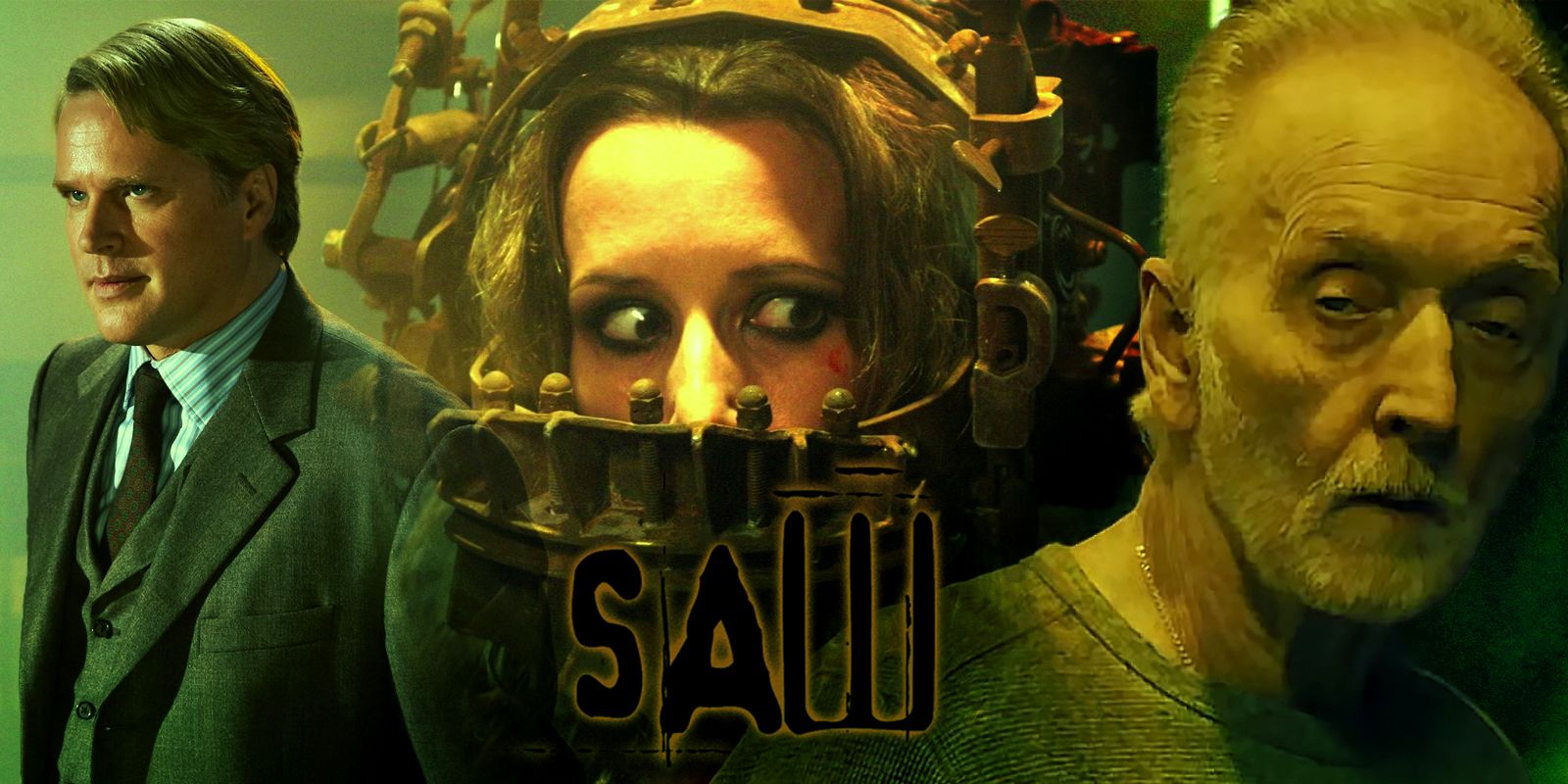Unmasking the Unexpected: The 10 Most Shocking Plot Twists in the Saw Saga (Spiral Included!)

Ah, the joy of watching the convoluted machinations of John Kramer, affectionately known as Jigsaw, in the "Saw" franchise isn't solely about the blood and gore, but rather the way the various pieces fit together like a jigsaw puzzle (pun intended). With each installment, it's like unwrapping a peculiar gift; sure, it's messy, but underneath the chaos lies a surprisingly profound message. "Cherish your life," becomes Jigsaw's almost romantic motto, as he leads unfortunate souls through torturous traps to impart life lessons. It’s less about sadism and more about transformation—who knew horror could be such a self-help seminar?
The franchise has earned a notorious reputation for its graphic violence, which is as undeniable as a bad hair day on a first date. Yet, somehow, amidst the grisly theatrics, *Saw* manages to inspire. No installment shines quite like the original, which not only delivered a high-concept narrative but also left viewers reeling with plot twists that knocked them off their popcorn-laden seats. Take Chris Rock’s "Spiral: From the Book of Saw", for instance. While it doesn’t boast the shock factor of the earlier films, it still manages to pad its spines with a little social commentary about police corruption, proving once again that even the scariest tales can resonate with reality.
In true horror fashion, it follows Detective Zeke Banks as he uncovers a gruesome trail of corpses, all tied to a copycat killer who has a vendetta against dirty cops. Just when you think you have the plot figured out, Zeke's rookie partner, William Schenk, pops up to confess to the mayhem. *What a twist!* Here’s a character we thought was dead, and now he’s casually admitting to offing corrupt officers because of his tragic backstory. A bit nostalgic, isn’t it? The popcorn couldn’t pop fast enough!
The legacy of *Saw* is complex, much like choosing what to wear on a first date—difficult yet filled with potential. Original creators James Wan and Leigh Whannell cleared out after a few rounds, but the series didn’t just wallow in mediocrity; it stayed fresh by hooking twists that honored its roots. I mean, John Kramer may have met his end in *Saw III*, yet his influence looms larger than an ex at a wedding. *Saw IV*, cleverly set during the same timeline, depicts various characters in a frantic race to figure out what Jigsaw has in store next. This dual narrative might not be the most groundbreaking twist, yet it paves the way for a new era of storytelling.
Throughout the series, Jigsaw's list of apprentices reads like an unusually dysfunctional family reunion. But Amanda Young? She’s the original bad girl! She starts as Jigsaw’s survivor but evolves into something far more fascinating. When new victims arise who fail to uphold Jigsaw's mantra of redemption, she gets embroiled in a tangled web of accusations. With Detective Kerry, who, spoiler alert, should have escaped her trap but doesn’t, her real downfall lies not with Jigsaw's discipleship. Enter Detective Hoffman, who, in a plot twist worthy of Shakespeare, muddles everything and ensures Amanda’s reputation takes a nosedive.
In *Saw III*, the true intricacies of character relationships unfurl, revealing that Jeff—our protagonist—who seems trapped in a revenge-driven vendetta, has more to lose than we initially realize. Oh, the reveals! It turns out Lynn, the supposed medic on scene, isn’t a mere bystander but his estranged wife, making their moments together even more achingly poignant. Talk about a romantic twist that would top a soap opera—the balletic chaos of emotions at play makes everything deliciously messy!
But of course, it wouldn’t be a *Saw* film without the complications of Amanda’s character arc, which takes a nose dive into tragedy. The refusal to stick to Jigsaw’s rules leads her down a dark path, eventually pitting her against John’s true vision. But what’s this? It’s revealed that she’s been manipulated by Hoffman all along, which alters her legacy in a way that could make even the bravest souls weep.
You think you’ve seen it all? Think again! Remember Adam, played by the talented Leigh Whannell? He’s stuck in that grim bathroom at the film’s conclusion, only to potentially meet a far rougher fate—that is until Amanda takes matters into her own hands. The layering of twists here is rich; it unravels in a way that retains that elusive spark of suspense while expanding the storyline. It raises the question: is anyone ever truly safe in Jigsaw’s world?
The brilliance of *Saw* lies not just in its shockingly intricate traps but in the emotional gravitas it carries. Even the mere setting of the film, characterized by its claustrophobic rooms, feels symbolic of the characters’ internal struggles. Take Amanda, for example. She survives the initial ordeal, but her arc transforms her from a victim to a vessel of revenge—when we think we know how her story will play out, it zags unexpectedly. And gosh, isn’t that how life often feels? Just when you’ve got your arm around the plot, it slips right out from underneath you and leaves you breathless.
The first installment seemed benign, offering what looked like just another slasher flick. Yet, by the end, it cemented its place in horror lore, transforming a very literal experience of losing a limb into a metaphor for survival against all odds. John Kramer may be a villain, but he’s also a complex character who challenges his victims to reflect on their lives, just as we do after

